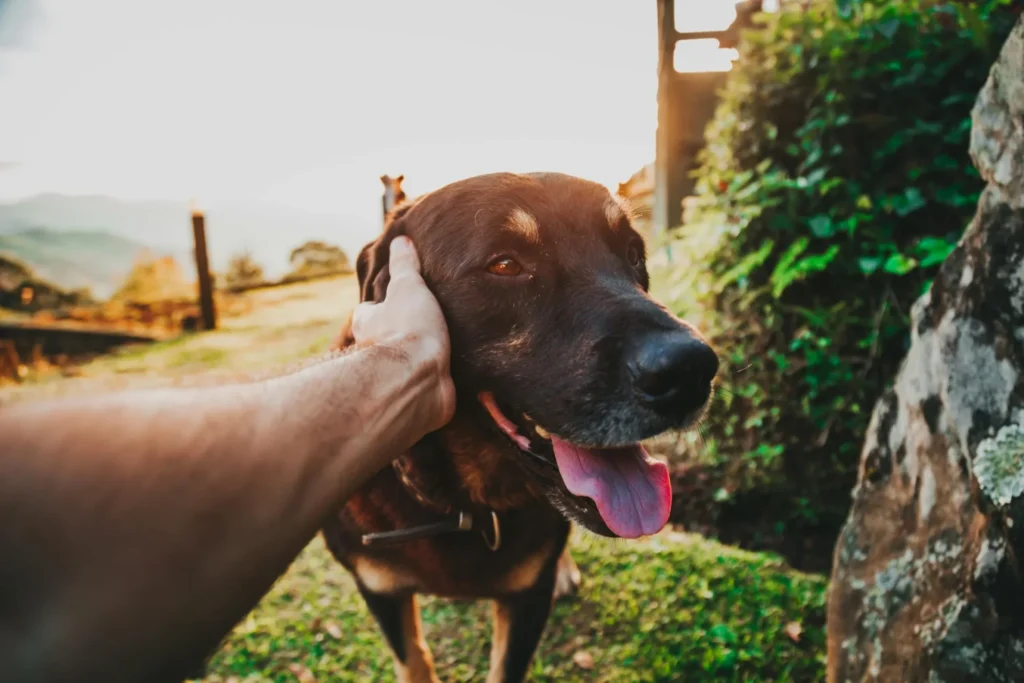- The Predatory Nature: Why Dogs Target Cats
- Can a Dog Kill a Cat Without Biting?
- Signs a Dog May Kill a Cat
- Can a Dog Beat a Cat in a Fight?
- Why Do Dogs Kill Kittens?
- Why Do Dogs Kill Cats and Not Eat Them?
- Why Do Stray Dogs Kill Cats?
- Will a Dog Kill a Kitten in the House?
- How Fast Will a Dog Kill a Kitten in the House?
- How to Forgive Your Dog for Killing Your Cat
- Legal Responsibility When a Dog Attacks a Cat
- If a Dog Kills a Cat, Will It Have to Be Put Down?
- How Often Do Dogs Kill Cats?
- Neighbors’ Dog Killed My Cat on My Property
- Dog Breeds and Their Prey Drive Towards Cats
- Comparison of Dog and Cat Behaviors by Age
- Best and Worst Dog Breeds for Cats
- Comparing Dog and Cat Behaviors by Breed and Age
- Facts and Figures: Dog Attacks on Cats
- FAQs: Understanding Dog-Cat Interactions
The Predatory Nature: Why Dogs Target Cats
Dogs and cats may seem like classic companions, but the reality is that a dog’s natural predatory instincts can sometimes lead to tragic encounters with felines. At the heart of this dynamic is the dogs’ innate drive to hunt and chase smaller prey. Cats, with their nimble movements and size, often trigger a dog’s predatory response.

The Prey Drive Explained
A dog’s prey drive is a deeply ingrained, evolutionary trait that compels them to pursue and capture smaller animals. This instinct is strongest in breeds that were originally bred for hunting, such as terriers, hounds, and herding dogs. When a dog spots a cat, their prey drive kicks in, urging them to chase and potentially attack the perceived prey.
Size Differences and Vulnerability
Cats are generally smaller and more vulnerable compared to most dog breeds. This size disparity can make cats an appealing target for dogs looking to satisfy their predatory urges. Kittens and elderly or sickly cats are especially at risk, as they may be less able to defend themselves.
Territorial Conflicts
In some cases, dogs may attack cats due to territorial disputes. If a cat wanders into a dog’s perceived domain, the dog may view the feline as an intruder that needs to be eliminated. This can lead to violent confrontations, especially in households with multiple pets.
Lack of Socialization and Training
Dogs that have not been properly socialized with cats or trained to suppress their predatory instincts are more likely to engage in aggressive behavior towards felines. Without guidance and obedience training, a dog’s natural hunting tendencies may go unchecked.
Can a Dog Kill a Cat Without Biting?
While dogs primarily use their powerful jaws and teeth to subdue prey, there are instances where a dog can kill a cat without directly biting the feline. Some of the ways a dog may kill a cat without using their mouth include:
Crushing or Suffocating
A large dog may be able to overwhelm a cat by pinning it to the ground and applying pressure to the cat’s chest or neck, effectively crushing or suffocating the feline.
Shaking or Throwing
Some aggressive dogs may grab a cat in their mouth and violently shake or toss the animal, causing severe internal injuries or trauma even without puncture wounds.
Blunt Force Trauma
A dog may inadvertently kill a cat by accidentally striking it with a paw or body slam, leading to fatal head injuries or organ damage.
It’s important to note that these methods of attack are often quicker and more brutal than a simple bite, leaving the cat with little chance of survival.
Signs a Dog May Kill a Cat
Recognizing the warning signs that a dog may be preparing to attack a cat can help pet owners intervene and prevent a tragic incident. Some common indicators include:
- Intense staring or fixation on the cat
- Lowered body posture, hackles raised
- Rapid breathing, dilated pupils
- Sudden tensing of the muscles
- Growling, snarling, or barking aggressively
- Chasing or stalking the cat
If you observe these behaviors, it’s crucial to separate the animals immediately and seek professional assistance to address the underlying issue.
Can a Dog Beat a Cat in a Fight?
The outcome of a confrontation between a dog and a cat largely depends on several factors, including the size, strength, and temperament of the animals involved.
Factors that Favor the Cat
- Agility and speed: Cats are generally faster and more agile than dogs, allowing them to dodge attacks and escape more easily.
- Sharp claws and reflexes: Felines have sharp claws that can inflict deep scratches, and their quick reflexes can give them an advantage in close-quarters combat.
- Climbing ability: Cats can often retreat to higher ground, making it difficult for dogs to reach them.
Factors that Favor the Dog
- Size and strength: Larger dog breeds, such as Rottweilers or Pit Bulls, have a significant size and strength advantage over most cats.
- Powerful jaws: Dogs’ powerful jaws and tenacious bites can overwhelm a cat’s defenses, especially if the dog is able to get a firm grip.
- Pack mentality: Dogs that live in multi-pet households may gang up on a lone cat, increasing their chances of victory.
In general, a healthy adult cat may be able to defend itself against a single small or medium-sized dog, but a large, powerful canine would likely have the upper hand in a physical confrontation. However, it’s important to note that these encounters can be highly unpredictable and potentially very dangerous for both animals.
Why Do Dogs Kill Kittens?
The primary reasons why dogs may kill kittens are similar to the factors that drive them to attack adult cats:
- Prey Drive: Kittens, being smaller and more vulnerable, can trigger a dog’s natural predatory instincts, leading them to attack and potentially kill the younger feline.
- Lack of Socialization: Dogs that have not been properly socialized with kittens or trained to suppress their hunting behaviors are more likely to view them as prey rather than potential companions.
- Resource Guarding: A dog may perceive a kitten as a threat to their resources, such as food, toys, or territory, and may lash out to protect what they consider their own.
- Maternal Instincts: In some cases, a female dog may attack and kill a kitten, especially if the dog has had recent litters of her own and feels protective of her puppies.
It’s crucial to note that while the natural instincts of dogs may lead them to target kittens, proper socialization, training, and supervision can help mitigate these dangerous behaviors and prevent tragic incidents.
Why Do Dogs Kill Cats and Not Eat Them?
The common perception that dogs kill cats but do not consume them is often accurately observed in many cases. There are a few key reasons why dogs may exhibit this behavior:
- Predatory Instinct, Not Hunger: The primary driver for a dog’s attack on a cat is their innate predatory instinct, not necessarily a need for food. Dogs may kill cats simply to satisfy their hunting urges, rather than to obtain a meal.
- Lack of Appetite for Cat Meat: Many dogs simply do not find the taste or texture of cat meat appealing. Cats have a different diet and physiology than the prey animals dogs are naturally inclined to hunt and eat, such as rodents or rabbits.
- Aversion to Small Prey: Some dogs may be hesitant to consume small prey like cats, as they are accustomed to larger game. The size and perceived effort required to tear apart a cat’s body may deter the dog from eating it.
- Territorial Behavior: In cases where a dog kills a cat due to territorial disputes, the dog may not have any interest in consuming the feline, as their primary goal was to eliminate the perceived threat or intruder.
It’s important to note that while this behavior is commonly observed, there are exceptions. Some dogs may, in fact, eat the cats they have killed, depending on their individual preferences and levels of hunger. However, the lack of appetite for cat meat is a significant factor in why many dogs do not consume the felines they have attacked.
Why Do Stray Dogs Kill Cats?
Stray and feral dogs are more prone to killing cats for a few key reasons:
- Increased Prey Drive: Stray dogs often have to rely on hunting and scavenging to survive, which can heighten their predatory instincts and make them more likely to target smaller animals like cats.
- Lack of Socialization and Training: Stray dogs typically have not been properly socialized with cats or trained to suppress their hunting behaviors, making them more likely to view felines as prey.
- Resource Scarcity: In areas with limited resources, stray dogs may be more inclined to compete for food, territory, and other necessities, leading to aggressive encounters with cats.
- Pack Mentality: Stray dogs that form packs may coordinate their efforts to hunt and kill cats, as they would with other prey animals, increasing the chances of successful attacks.
- Survival Instinct: For some stray dogs, killing cats may be a matter of survival, as they may view the felines as a reliable source of food or a threat to their own existence.
It’s important to note that stray dogs pose a significant risk to the well-being of cats, both domesticated and feral, in their respective environments. Addressing the issue of stray and feral dog populations, through programs like spaying/neutering and rehoming, can help reduce these predatory encounters and protect vulnerable feline communities.
Will a Dog Kill a Kitten in the House?
The likelihood of a dog killing a kitten in a household setting can vary depending on several factors:
- Breed and Size Differences: Larger, more powerful dog breeds, such as Pit Bulls, Rottweilers, or Mastiffs, are more likely to overpower and kill a kitten due to their size and strength advantage. Smaller dog breeds may be less of a threat, but they can still pose a risk.
- Prey Drive and Socialization: Dogs with a strong prey drive and lack of proper socialization with kittens are more prone to viewing them as prey and attacking them. Proper training and exposure can help curb this behavior.
- Territoriality and Resource Guarding: A dog may perceive a kitten as a threat to their territory or resources, such as food, toys, or attention from the owners, and may lash out aggressively to protect what they consider their own.
- Supervision and Management: The presence of responsible adult supervision and proper management, such as keeping dogs and kittens separated when unsupervised, can significantly reduce the risk of a deadly confrontation.
It’s essential to note that even well-trained, socialized dogs can still pose a risk to kittens, especially if the canine is left unsupervised or the kitten is particularly vulnerable. Proper precautions, close monitoring, and gradual, positive introductions are crucial to ensuring the safety of both pets.
How Fast Will a Dog Kill a Kitten in the House?
The speed at which a dog may kill a kitten in a household setting can vary greatly, depending on several factors:
- Prey Drive and Predatory Instincts: Dogs with a stronger prey drive and more ingrained predatory instincts may act more quickly and decisively when attacking a kitten, potentially killing it within minutes.
- Size and Strength Differences: Larger, more powerful dog breeds can overwhelm and kill a kitten much faster than smaller, less aggressive canines. The size disparity plays a significant role in the speed of the attack.
- Method of Attack: If a dog grabs the kitten in its jaws and shakes or crushes it, the kitten’s death can occur rapidly, often within a matter of seconds to minutes. Blunt force trauma or suffocation can also lead to a relatively quick demise.
- Degree of Injury: The extent of the injuries inflicted by the dog’s attack is a critical factor. Severe wounds to vital organs or blood loss can result in a kitten’s death within minutes, whereas less severe injuries may prolong the time before the kitten succumbs.
It’s important to note that these scenarios are highly variable and can be unpredictable. The speed at which a dog may kill a kitten can range from mere seconds to several minutes, depending on the specific circumstances and the animals involved. Prompt intervention and separation of the animals is crucial to prevent such tragic incidents.
How to Forgive Your Dog for Killing Your Cat
Losing a beloved pet to a dog attack can be a traumatic and heartbreaking experience for any pet owner. The grief and anger felt towards the dog responsible can be overwhelming. However, the path to forgiveness, while challenging, can be an important step in the healing process. Here are some suggestions on how to forgive your dog for killing your cat:
- Understand the Instincts: Recognize that a dog’s predatory instincts are not a conscious, malicious act, but a natural behavioral response. Educating yourself on the reasons why dogs may target cats can help you better understand the underlying factors.
- Acknowledge Your Emotions: Allow yourself to fully experience the grief, anger, and other emotions you are feeling. Suppressing these feelings can hinder the forgiveness process. Seek support from loved ones, a therapist, or pet loss support groups.
- Separate Blame from the Dog: Resist the urge to demonize your dog or view them as inherently “bad.” The incident was likely a result of their natural instincts, not a deliberate act to hurt you or your cat.
- Consider Mitigating Factors: Was the dog properly trained and socialized? Were there any environmental or situational factors that may have contributed to the attack? Understanding the context can help provide perspective.
- Seek Professional Guidance: Consult a veterinary behaviorist or certified trainer to assess your dog’s temperament and determine if the dog can be safely reintegrated into your home, or if rehoming may be the best option.
- Gradually Work Towards Forgiveness: Forgiveness is a process, not an event. Take small steps, such as acknowledging your dog’s positive qualities or finding ways to channel your grief into positive actions, like donating to an animal welfare organization.
Ultimately, the path to forgiveness is personal and may take time. Be patient with yourself, and seek support from professionals and loved ones as you navigate this difficult emotional journey.
Legal Responsibility When a Dog Attacks a Cat
The legal responsibility when a dog attacks and kills a cat can vary depending on the specific laws and regulations in the jurisdiction where the incident occurred. However, there are some general principles that often apply:
- Leash Laws: Most areas have laws requiring dogs to be leashed or otherwise confined when in public spaces. If a dog attacks a cat while off-leash in violation of these laws, the dog’s owner may be held liable for any resulting damages.
- Negligence: If the dog’s owner knew or should have known that their dog had a propensity for aggression towards cats, and they failed to take reasonable precautions to prevent the attack, they may be found negligent and liable for the cat’s death.
- Property Damage: In some cases, the cat may be considered the property of its owner, and the dog’s owner may be required to compensate the cat’s owner for the monetary value of the animal, as well as any associated veterinary or burial expenses.
- Dangerous Dog Designations: If a dog has a history of attacking other animals, the authorities may deem the dog “dangerous” and place specific restrictions on the owner, such as requiring the dog to be muzzled in public or even ordering the dog to be euthanized in extreme cases.
- Homeowner’s or Renter’s Insurance: Depending on the policy, the dog owner’s homeowner’s or renter’s insurance may provide coverage for any legal liability or damages stemming from the dog’s attack on the cat.
It’s important to note that the specific legal implications can vary greatly depending on the jurisdiction and the circumstances surrounding the incident. Consulting with a local attorney who specializes in animal law can help clarify the rights and responsibilities of all parties involved.
If a Dog Kills a Cat, Will It Have to Be Put Down?
The decision to euthanize a dog that has killed a cat is not a straightforward one and can depend on several factors:
- Severity and Circumstances of the Attack: If the attack was a one-time incident and the dog did not display a history of aggression towards cats, the authorities may be less likely to order the dog’s euthanasia. However, if the attack was particularly brutal or the dog has a documented history of similar incidents, the chances of the dog being euthanized increase.
- Local Laws and Regulations: Different jurisdictions have varying laws and policies regarding “dangerous” or “vicious” dogs. In some areas, a dog that has killed a cat may automatically be deemed a threat and ordered to be euthanized, while in others, the decision may be more nuanced.
- The Dog’s Temperament and Behavior: A thorough evaluation of the dog’s overall temperament, behavior, and potential for rehabilitation can influence the decision. Dogs that are deemed to pose an ongoing threat to public safety are more likely to be euthanized.
- Owner Responsibility and Cooperation: The dog owner’s willingness to take responsibility, follow safety protocols, and cooperate with authorities can also play a role in the final decision. Owners who demonstrate a commitment to addressing the issue may be given more lenient options, such as mandatory training or restrictions on the dog’s movements.
- Consideration of Mitigating Factors: Factors like the dog’s age, breed, history of abuse or neglect, and the specific circumstances surrounding the attack may be taken into account when determining the appropriate course of action.
Ultimately, the decision to euthanize a dog that has killed a cat is made on a case-by-case basis, considering the complex legal, ethical, and public safety implications. Owners should work closely with authorities, animal control, and pet behavior experts to ensure the best outcome for all parties involved.
How Often Do Dogs Kill Cats?
The frequency of dog attacks on cats can vary widely depending on several factors, but some general statistics and trends can be observed:
- Prevalence Estimates: Studies suggest that dog attacks on cats are relatively common, with estimates indicating that between 5-10% of all dog-on-cat interactions result in the cat’s death.
- Breed Differences: Certain dog breeds, such as terriers, hounds, and herding dogs, are more prone to exhibiting predatory behavior towards cats due to their strong prey drive and hunting instincts. These breeds are involved in a disproportionate number of cat attacks compared to other dog types.
- Environmental Factors: Factors like the presence of stray or feral dogs, lack of proper confinement and supervision, and the proximity of dog and cat populations can all contribute to the frequency of these incidents.
- Seasonal Variations: Some studies suggest seasonal patterns, with more cat attacks occurring during the spring and summer months when cats are more likely to be outdoors and interacting with dogs.
- Underreporting: Many instances of dog-on-cat attacks may go unreported, as pet owners may be reluctant to admit their dog’s involvement or the authorities may not be notified, making it difficult to obtain accurate data on the true frequency of these incidents.
While specific statistics can vary, it’s clear that dog attacks on cats are a relatively common occurrence that pet owners and communities need to be aware of and proactively address through training, management, and responsible pet ownership.
Neighbors’ Dog Killed My Cat on My Property
Discovering that your neighbor’s dog has killed your cat on your own property can be a deeply upsetting and frustrating experience. Here’s how you can approach this situation:
- Document the Incident: Gather as much evidence as possible, including photographs of the scene, any injuries to your cat, and any witnesses. This documentation will be crucial if you decide to pursue legal action.
- Notify the Neighbors: Calmly and politely inform your neighbors about the incident and express your concerns. Give them the opportunity to take responsibility and address the situation.
- Contact Local Authorities: If your neighbors are uncooperative or the situation escalates, contact your local animal control or law enforcement agencies. They can investigate the incident and determine if the dog’s owner is liable for any damages or violations.
- Understand Local Laws: Research the laws in your area regarding dog attacks on private property, as well as any “one-bite” rules or regulations that may apply. This knowledge will help you understand your rights and the potential legal recourse available.
- Seek Compensation: Depending on the laws in your jurisdiction, you may be able to pursue compensation from the dog’s owner for the loss of your cat, as well as any associated veterinary or burial expenses.
- Consider Mediation: If you and your neighbors are open to it, you could explore mediation as a way to find a mutually agreeable solution, rather than escalating the conflict through legal channels.
- Prioritize Safety: Ensure that your property is secure and that your remaining pets are kept safe from any potential future incidents. Consider installing additional fencing or taking other preventive measures.
Dealing with the loss of a beloved pet and the aftermath of a neighbor’s dog attack can be emotionally draining. Seek support from pet loss resources, counseling, or animal welfare organizations to help you navigate this difficult situation.
Dog Breeds and Their Prey Drive Towards Cats
| Breed Category | Breeds | Prey Drive Towards Cats |
|---|---|---|
| Terriers | Jack Russell Terrier, Rat Terrier, Fox Terrier | High |
| Hounds | Bloodhound, Basset Hound, Foxhound | High |
| Herding Dogs | Border Collie, German Shepherd, Australian Shepherd | Moderate to High |
| Retrievers | Labrador Retriever, Golden Retriever | Low |
| Spaniels | Cavalier King Charles Spaniel | Low |
| Poodles | Standard Poodle, Miniature Poodle | Low |
Comparison of Dog and Cat Behaviors by Age
| Behavior | Puppies | Adult Dogs | Senior Dogs |
|---|---|---|---|
| Prey Drive | High | Moderate | Moderate to Low |
| Curiosity towards Cats | High | Moderate | Low |
| Tolerance and Patience | Low | High | Moderate |
| Risk of Accidental Harm | High | Moderate | Moderate to High |
Best and Worst Dog Breeds for Cats
When it comes to the compatibility between dogs and cats, certain dog breeds are generally more or less predisposed to coexisting peacefully. Here’s a general overview of some of the best and worst dog breeds for living with cats:
Best Dog Breeds for Cats
- Labrador Retrievers: Known for their gentle, family-friendly temperament, Labradors are often excellent companions for cats.
- Golden Retrievers: Similar to Labradors, Golden Retrievers are typically patient, playful, and tolerant of feline friends.
- Poodles: Poodles, particularly the Standard and Miniature varieties, are often described as intelligent, trainable, and less prone to chasing or harming cats.
- Beagles: While Beagles have a strong prey drive, they can be successfully socialized to live peacefully with cats, especially if introduced at a young age.
- Cavalier King Charles Spaniels: These affectionate and gentle dogs tend to have a low prey drive and can coexist well with cats.
Worst Dog Breeds for Cats
- Terriers: Breeds like Jack Russell Terriers, Rat Terriers, and Fox Terriers often have a strong instinct to chase and hunt smaller animals, making them less suitable for homes with cats.
- Sighthounds (Greyhounds, Whippets, Salukis): These fast-moving dog breeds are prone to chasing and catching smaller prey, which can pose a significant threat to cats.
- Herding Dogs (Border Collies, German Shepherds, Australian Shepherds): While highly intelligent, these breeds may exhibit herding or chasing behaviors that can be problematic for cats.
- Hounds (Bloodhounds, Basset Hounds, Foxhounds): Hounds are known for their keen sense of smell and strong prey drive, which can lead to conflicts with feline companions.
- Pit Bull-type Breeds: While not all Pit Bulls are inherently aggressive towards cats, their strength and potential for high prey drive can make them challenging to safely integrate with felines.
It’s important to note that individual dog temperaments can vary, even within a breed. Proper socialization, training, and ongoing supervision are crucial for any dog-cat household, regardless of the dog’s breed.
Comparing Dog and Cat Behaviors by Breed and Age
To better understand the dynamics between dogs and cats, let’s examine how their behaviors can vary based on breed and age:
Breed Differences
- Terriers: As mentioned earlier, terrier breeds like Jack Russells and Fox Terriers tend to have a stronger prey drive and may be more inclined to chase and attack cats.
- Hounds: Hound breeds, such as Bloodhounds and Foxhounds, are often driven by their keen sense of smell and can be relentless in pursuing smaller animals, including cats.
- Herding Dogs: Dogs bred for herding, like Border Collies and Australian Shepherds, may exhibit behaviors like chasing, nipping, or attempting to herd cats, which can escalate into conflicts.
- Retrievers: Breeds like Labradors and Golden Retrievers are generally more gentle and tolerant of cats, making them better candidates for peaceful coexistence.
Age Differences
- Puppies: Young puppies may be more curious and playful towards cats, but their lack of training and socialization can lead to accidental harm or frightening the feline.
- Adult Dogs: Mature dogs that have been properly socialized and trained are more likely to exhibit a calm, controlled demeanor around cats, reducing the risk of attacks.
- Senior Dogs: As dogs age, they may become less active and tolerant, which can make them more likely to lash out at a cat they perceive as a threat or nuisance.
It’s essential to consider both the breed-specific traits and the individual dog’s age and life stage when introducing a canine to a feline companion. Proper training, socialization, and close supervision are crucial for ensuring a safe and harmonious relationship between the two species.
Facts and Figures: Dog Attacks on Cats
- Prevalence Estimate: 5-10% of all dog-on-cat interactions result in the cat’s death.
- Seasonal Variation: More dog attacks on cats occur during the spring and summer months.
- Breed Predisposition: Terriers, hounds, and herding dogs are involved in a disproportionate number of cat attacks.
- Underreporting: Many instances of dog-on-cat attacks go unreported, making it difficult to obtain accurate data.
- Legal Liability: Dog owners may be held liable for damages and veterinary/burial expenses if their dog kills a neighbor’s cat.
- Euthanasia Considerations: Factors like attack severity, dog’s history, and public safety concerns can lead to a dog being ordered to be euthanized.
FAQs: Understanding Dog-Cat Interactions
Q: Why do dogs chase and attack cats?
A: Dogs are driven by their natural predatory instincts, which can be triggered by the smaller size, movement, and perceived vulnerability of cats. This prey drive, combined with a lack of socialization and training, can lead to aggressive behaviors towards felines.
Q: Can a dog kill a cat without biting it?
A: Yes, a dog can potentially kill a cat without directly biting the feline. Methods like crushing, suffocating, or violent shaking can also result in a cat’s death, even without puncture wounds.
Q: What are the warning signs that a dog may attack a cat?
A: Common indicators include intense staring, lowered body posture, rapid breathing, growling, and sudden tensing of the muscles. Observing these behaviors can help pet owners intervene and prevent a deadly confrontation.
Q: How can I introduce a new dog and cat in my household safely?
A: Slow, supervised introductions, positive reinforcement training, and creating a neutral territory are crucial for successfully integrating a dog and cat. Consulting with a professional trainer or behaviorist can also help ensure a smooth transition.
Q: What should I do if my dog kills my cat?
A: Seek immediate veterinary care for your cat, document the incident, and notify your neighbors and local authorities. Consult with a professional to determine if the dog can be safely reintegrated or if rehoming may be necessary. Also, seek support to help you cope with the loss of your beloved pet.
Q: Can a dog be put down for killing a cat?
A: The decision to euthanize a dog that has killed a cat depends on factors like the severity of the attack, the dog’s history, and local laws. Authorities will assess the risk the dog poses and may order its euthanasia if deemed necessary for public safety.
Remember, the relationship between dogs and cats can be complex, and proper training, socialization, and management are key to preventing tragic incidents and fostering a harmonious coexistence.































